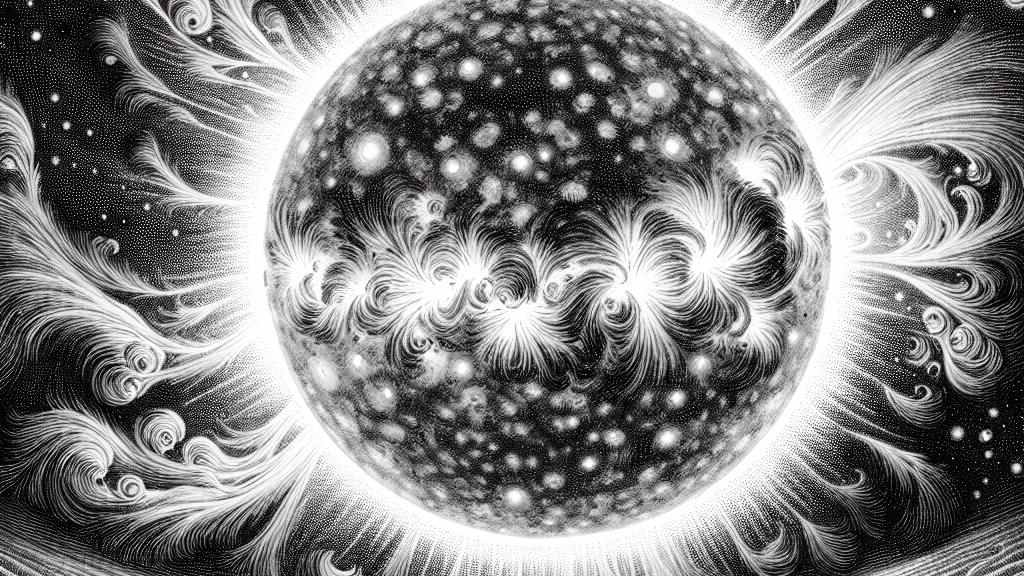Understanding the Solar Cycle and Its Effects on Particles in Space
Overview
- The solar cycle, stretching over approximately 11 years, plays a crucial role in determining sunspot activity and cosmic particle dynamics.
- Researchers are dedicated to analyzing charged particle interactions to unravel the intricate mysteries of space weather.
- Solar flares and coronal mass ejections are not only disruptive to communications but also create breathtaking auroras that enchant viewers worldwide.

The Nature of the Solar Cycle
The solar cycle represents a spectacular, repeating phenomenon that occurs roughly every 11 years, actively influencing our sun and the environment around it. Imagine standing on Earth, gazing at a bright sun while knowing that its surface is covered with fluctuating sunspots—dark patches caused by the sun’s magnetic activity. When the cycle reaches its peak, known as the solar maximum, we witness a surge of activity that resembles a cosmic fireworks display, sending waves of energetic particles cascading through the heliosphere. Recent data reveals that during these peak periods, cosmic ray intensity can double or even triple, emphasizing how profoundly the solar cycle affects not just the sun but the entire cosmic landscape.
Impact of Solar Activity on Particles
In a groundbreaking exploration utilizing data from the Alpha Magnetic Spectrometer aboard the International Space Station, scientists have discovered compelling correlations between solar activity and the behavior of charged particles. As the solar cycle progresses, fluctuations in the heliosphere’s magnetic field create a dynamic playground for these particles. For instance, during periods of heightened solar activity, collisions among cosmic rays and antiprotons increase, leading to striking changes in their energy levels and distribution. Picture it this way: the sun's magnetic whims orchestrate a fascinating dance among particles, resulting in a symphony of energy that can be felt even here on Earth. This ongoing investigation provides a profound understanding of the intricate phenomena that connect our sun to the particles roaming the cosmos.
The Consequences of Solar Events
Solar events can unleash spectacular forces that captivate both scientists and the general public alike! Take, for example, the recent X5.0 solar flare—the most powerful one observed since 2017. This severe burst of energy caused temporary communication disruptions across vast distances, leaving airline pilots momentarily disconnected from air traffic control. Imagine the tension in the cockpit during those crucial moments! Moreover, these flares can trigger coronal mass ejections (CMEs)—massive clouds of solar plasma that hurtle across space carrying the sun's magnetic field with them. When these CMEs encounter Earth's magnetic field, they can create stunning geomagnetic storms, which manifest as dazzling auroras like the Northern Lights. This enchanting natural display reminds us of the immense power of solar activity and its ability to influence not just technology but also the breathtaking beauty of our planet.

Loading...